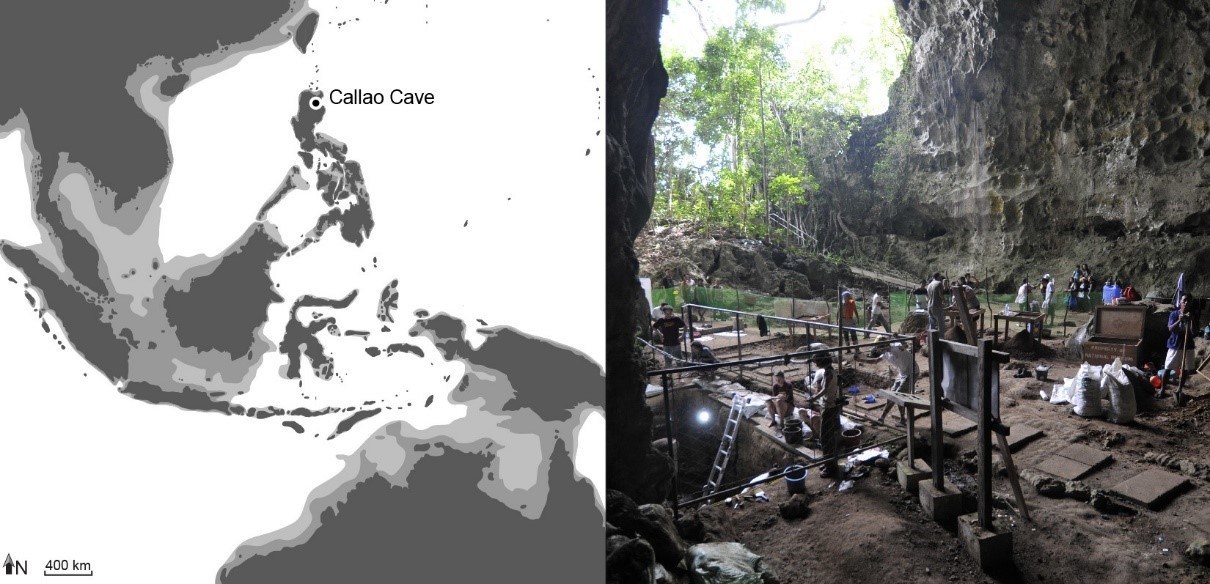Fossils Of New Human Species Unearthed In The Philippines
Language
Reading Level
Listen to Article

Paleontologists had long believed that ancient humans used land bridges to migrate from one country to another. Hence, Luzon, the largest of the 7,641 islands that comprise the Philippine archipelago in the Western Pacific Ocean, appeared to be entirely out of reach for our ancestors. Now, there is evidence that a previously unknown human species managed to overcome the ocean currents and settle on the island between 50,000 and 67,000 years ago — around the same time as our species, the Homo sapiens and our closest ancestors, the Neanderthals, dwelled on Earth.
Armand Mijares, who co-authored the study published in the journal Nature on April 10, 2019, discovered the ancient humans' first fossil, a nearly complete foot bone, in Luzon's Callao Cave in 2010. Though the University of the Philippines Diliman archaeologist suspected it may belong to that of a new species, he needed more evidence. Subsequent visits to the location in 2011 and 2015 yielded two more toe bones, along with seven teeth, two finger bones, and part of a femur. Though that may not sound like much, it was enough to confirm the researcher's theory.

Mijares and study co-author Prof. Philip Piper of the Australian National University believe the fossils belonged to at least three individuals — two adults and a juvenile. An analysis of the tiny bones suggests that the ancient human, dubbed Homo luzonensis (H. luzonensis), was under 4-feet (1.2 meters) tall. The researchers say while its teeth were a mix of those found in modern humans, Neanderthals, and the Homo floresiensis — tiny Hobbit-like humans that once lived in Indonesia — its finger and toe bone were curved similar to that of the tree-climbing Australopithecines, which lived millions of years ago.
"It's quite incredible, the hand and feet bones are remarkably Australopithecine-like," says Piper. "The Australopithecines last walked the Earth in Africa about 2 million years ago and are considered to be the ancestors of the Homo group, which includes modern humans. So, the question is whether some of these features evolved as adaptations to island life, or whether they are anatomical traits passed down to H. luzonensis from their ancestors over the preceding 2 million years."

To discover the ancient human's ancestors and how it first arrived in the Philippines, Mijares will have to continue looking for new fossils. The scientist, however, does not seem to mind and says, “I'm very proud, because as a Filipino and Southeast Asian, we tend to be on the periphery of this [evolution] debate. Now, we can be actively engaged in the debate, because our areas—our sites—are now recognized. And that is, I guess, my legacy in this world.”
Though H. luzonensis's tale will take a few years to unravel, its presence demonstrates that the story of human evolution may be far more complicated than previously thought. It’s also becoming clear to experts that Southeast Asia is home to more hominin species than believed, many of which have yet to be unearthed.
Resources: nature.com, newatlas.com,nationalgeographic.com

Get the Workbook for this article!
Workbook contains: Article, Reading Comprehension, Critical Thinking Questions, Vocabulary in Context (+ answers), Multiple Choice Quiz (+ answers), Parts of Speech Quiz (+ answers), Vocabulary Game (+ answers)Cite Article
Learn Keywords in this Article
356 Comments
- Evelynabout 5 yearsTo intresting!
- Have sabout 5 yearsThis is so cool man
- Kermit Has youabout 5 yearscool
- Marinaabout 5 yearsWow! So cool! I just cant beleive how the finger bones were curved to the Australopithecines! It shows just how cool science and histroty is! It also shows how similar we were to animals! I hope they research this more! It would be really cool to learn more about this! Marina ~<3
- demiguiseover 4 yearsI agree it would be cool to learn about some of my ancestors.
- Ant12345over 5 yearshelllo im doing this for a project called in the news and this is cool
- Zofia Ganzonover 5 yearsSo cool, educational, and fascinating! I love to learn and I love history of modern humans!
- OOFover 5 yearsThe fact that there are more species of homo sapians is amazing,and the fact that the foot bone is almost complete is amazing.
- TheDogeMasterover 5 yearsThis is kinda gross, kinda cool
- Davidover 5 yearsWeird,creepy, but 😎
- D.O.G.L.O.V.E.over 5 yearsAwsomeamazingspectacularwowfactor!!!!!!!!!



